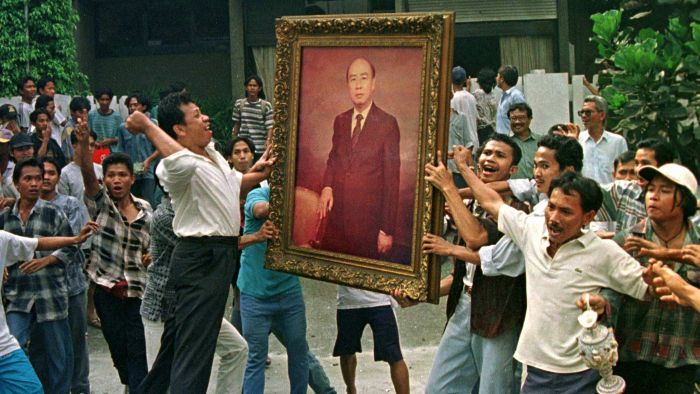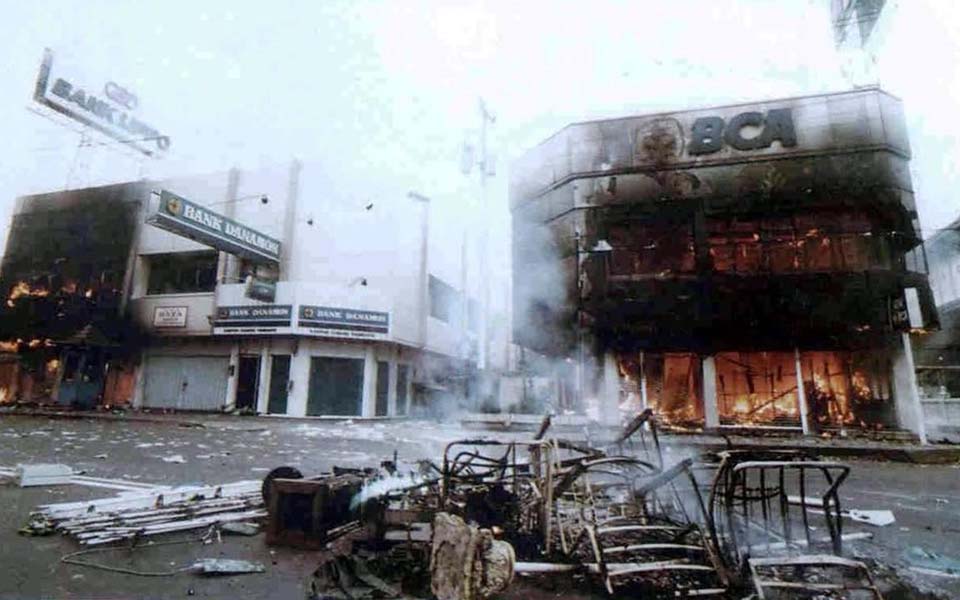The May 1998 riots of Indonesia, also known as the 1998 tragedy, were incidents of mass violence, demonstrations, and civil unrest of a racial nature that occurred throughout Indonesia, mainly in Medan in the province of North Sumatra, the capital city Jakarta, and Surakarta in the province of Central Java. It eventually led to the resignation of President Suharto and the fall of the New Order government. The main targets of the violence were ethnic Chinese Indonesians.
It was estimated that more than a thousand people died in the riots. At least 168 cases of rape were reported. As of 2010, legal proceedings regarding the riots have yet to be completed
But, Indonesia’s case is puzzling. After three decades of authoritarian rule, Indonesia’s transition to democracy in 1999 was rapid and violent, triggered by a severe economic crisis, mass demonstrations and riots.
Provocateurs, suspected to be military, goaded rioters, screaming ethnic insults like "Cina babi!" (English: Chinese pigs!) and "Ganyang Cina!" (English: Slaughter the Chinese!). The provocateurs also shouted commands, directing the riots towards Chinese-owned businesses and away from Native Indonesian-owned ones. In this climate of fear, thousands of ethnic Chinese, who made up about 3–5% of Indonesia's Chinese population, fled the country. Thousands of foreign nationals and expatriates left Indonesia, some evacuated by their embassies.

Rioting mobs take out their anger on the portrait of Indonesia's wealthiest ethnicly Chinese man Sudono Salim. (ABC News)

Shops on fire during May 1998 riots (Liputan 6)